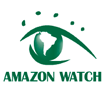Chevron Lawyers Fail to Show for Ecuador Court Date with Indians
In Secret Police Report, Chevron Claimed To Judge That Indians Whose Land The Company Contaminated Want To Kidnap Them

Amazon Watch
19 October 2005 - FOR IMMEDIATE RELEASE
Contact: Karen Hinton at +1.703.798.3109
Lago Agrio, Ecuador - In last-minute maneuvering yesterday that had the apparent odor of corruption, Chevron lawyers managed to convince the Ecuador judge presiding over the environmental "trial of the century" to cancel a long-planned judicial site visit to the territory of a near-extinct indigenous tribe where several tribe members planned to testify against the company.
Chevron used the ridiculous pretext that the tribe members and the non-indigenous inhabitants of the Guanta area, who had been looking forward to the inspection for more than a year, planned to kidnap the Chevron lawyers and disrupt the trial. No evidence was presented for the claim other than a secret military police report that the judge would not show to journalists. The Cofan are known as a peaceful people and they work closely with their lawyers, who are respected members of the Ecuadorian bar.
"This is an example of how a desperate company, Chevron, has manipulated the judicial process," said Alejandro Ponce Villacis, a lawyer for the affected communities. "Chevron obviously was scared of the testimony that was coming from the Cofan leaders about how the tribe is being wiped out by this company's contamination. They don't want this story heard neither by the court nor by journalists. So they pulled a last-minute stunt on the judge."
Ponce Villacis predicted the move would "backfire" against Chevron over time by exposing the fear the company has of knowing the truth about the impact of its operations. Chevron is being sued for at least $6 billion in clean-up costs for what experts believe is the worst oil-related contamination in the world, caused by Texaco`s operation of a former concession in Ecuador's rainforest from 1964 to 1990.
Chevron admits to dumping 18.5 billion gallons of toxic water of formation into the rainforest, but claims the practice adhered to industry standards and was legal. Five indigenous groups, including the Cofan, live in the area, and three say they are on the verge of extinction from losing their land and population to oil-related contamination.
In meeting with Judge Efrain Novillo, Chevron cited the supposed "military report" as a basis for the suspension. The lawyers and private security officers for Chevron are housed on the military base where the report was written, a fact that the lawyers for the affected communities have long denounced as improper.
Nevertheless, the judge ordered the suspension of the inspection at 5:59 p.m., one minute before the legal deadline to issue an order for the day. Curiously, the Chevron request for the suspension was received only at 5:57 p.m., or two minutes before. It would have been impossible for the judge to issue his one-page written in two minutes without it being prepared beforehand, said Ponce Villacis.
"This appears to behave been a set-up," he said. "We never had a chance to be heard."
Chevron's maneuvering comes at a time that the company's prospects in the case appear to be dimming. Chevron scientists are essentially proving the case against themselves: already, they have reported 312 soil and water samples to the court that violate Ecuadorian law, covering 100% of the 18 inspected sites for which information is available. This includes 14 sites that were supposedly "remediated" by Chevron in the mid 1990s, but which still contain large quantities of cancer-causing toxins.
"This company surely did not want to be confronted with the declarations of the Cofan people, which have suffered greatly due to Texaco's contamination," said Ermeregildo Criollo, a Cofan leader, whose local population has been reduced to only 400 people since Texaco arrived in his territory in 1970.
Criollo added: "The only thing that threatens the physical security in this region is Chevron, the company that invaded and contaminated our territory, putting our health and culture in danger."
Various national and international reporters, including the AP and the New York Times, were in the region to report on the planned inspection.